How to Make Your Microphone Louder Than Windows Lets You
5 Best Video Volume Boosters to Boost Volume Online and Offline

Our special pick to recommend when looking for a video volume booster or video volume editor is Movavi Video Editor Plus. It's a really easy-to-use video sound amplifier that can allow you to enhance the audio in a video in a matter of seconds via a well-made, beginner-friendly user interface. What's more, you can use the program for free with a 7-day trial to test it out with no commitments.
If you purchase the full version of Movavi Video Editor Plus, you'll be able to enjoy a wide range of additional editing features to enhance and adjust your videos, such as trimming, cutting, joining, and more. Movavi Video Editor Plus also offers professional-level editing tools like transitions, filters, and downloadable effects from the Movavi Effects Store to take your editing to the next level.
How to increase a video volume with Movavi Video Editor Plus
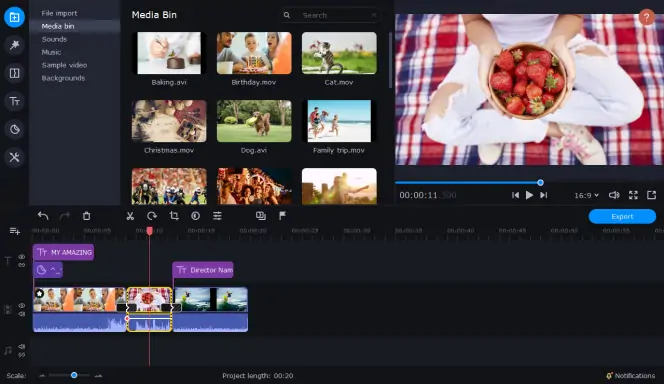
OS: Windows, Mac
Price: Free trial, lifetime – $59.95
Best for: Users who want pro-level editing with an easy interface
To change the video sound settings on a desktop, use Movavi Video Editor Plus. With this video and audio editor, you can edit video files, make a great movie, and immediately save it in any popular format. From the guide below, you'll learn how to increase the volume of a video.
Pros:
- Very easy to use
- Useful for cutting, trimming, cropping, and adjusting videos
- Advanced editing features like filters, titles, and transitions
Cons:
- Watermark when using the free version
- You have to pay to unlock all the features
- Free trial only lasts 7 days
Step 1. Install the Movavi sound enhancer
Run the downloaded file and follow the instructions on your computer screen to complete the installation.
Step 2. Add your clip
Start the volume editor, click Add Files and find the video clip in which you want to raise the volume. The clip will appear in the Media Bin. Drag and drop the files from the Media Bin to the Timeline.
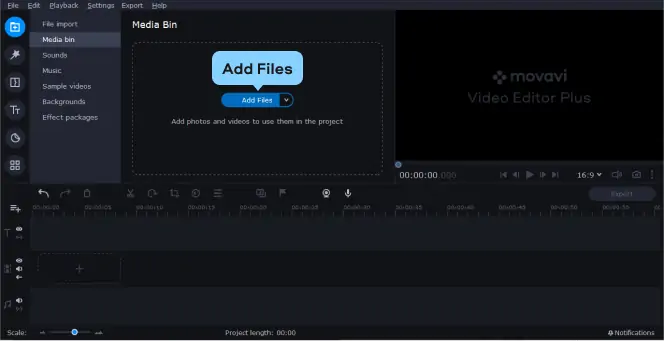
Step 3. Boost the volume of the video
Select the added file and click Clip Properties with a cogwheel icon. In the Video tab of the sound increaser, just change the Volume setting to make the video louder.

Step 4. Save Your Edited Video
Click the Export button in the lower right-hand corner of the app. In the open dialog box, choose the appropriate settings category and the desired format for your edited video: MP4, WMV, AVI, MKV, 3GP, and more. Click Start to save your video in the destination folder. That's how easy it is to increase a video volume with Movavi.
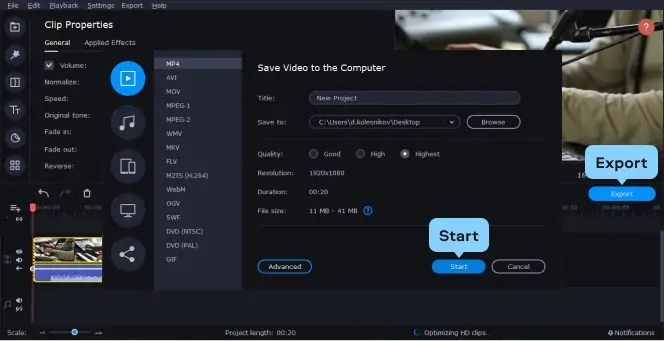
How to use the built-in Windows video sound booster
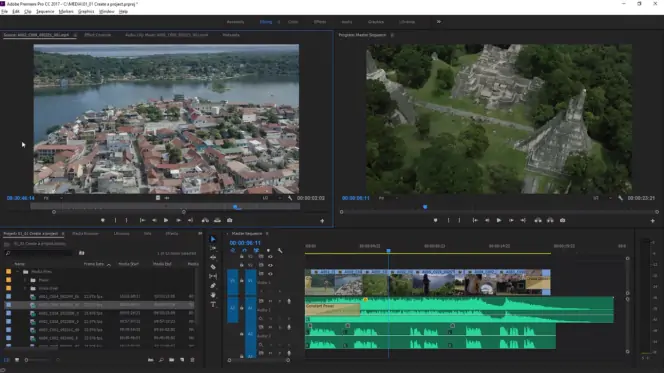
OS: Windows
Price: Free
Best for: Users of older Windows devices
Everybody knows Windows Movie Maker – it's one of the most popular programs for beginner video creators and one of the easiest to master. With Windows Movie Maker, you can quickly create nice-looking films using simple drag-and-drop controls. This video sound booster allows you to add effects, titles, transitions, music, as well as increase the volume of your video. If you need capable video editing software for free, but you are not interested in spending hours figuring out the ins and outs of a program, Windows Movie Maker could be your choice.
However, nowadays, it's hard to find an installation file for the program. Windows Movie Maker was not updated since 2012 – Windows 8 and Windows 10 were released without this program. So, if you're looking for a video-editing app for newer Windows versions, you'll have to look elsewhere. The company that created Windows Movie Maker recommends not downloading this application from third-party sites, as the download may come with viruses or malware. But if you're lucky to maintain Windows XP on your computer, you can test this software too. Except for all the other features, this video music editor can help you increase the volume of your video. Here's the short guide on how to enhance audio in a video.
Pros:
- Free to use
- Built-in by default for users on older Windows devices
- Very beginner-friendly with a smart and simple user interface
Cons:
- Not suitable for users of other operating systems
- Discontinued in 2017
- Doesn't appear on new Windows 10 devices
Step 1. Add your audio to the app
First, you need to prepare the audio files that you want to use in your movie or slideshow. Please note their format: Movie Maker does not support all extensions. If everything is ready, then we will further consider how to add music to a video. To load a sound file, select Import Sound or Music on the taskbar. Select one or more files that you want to use in your movie and click the Import button to insert the music. The track will appear in the compilation. To add it directly to your photo or video, drag the file onto the timeline and drop it where the sound will start playing.
Step 2. Get rid of the unneeded parts (optional)
It is not necessary to use the entire track; if desired, you can cut it on both sides. To do this, move the mouse pointer over the beginning or end of the track and, when the double red arrow appears, drag it in.
To move a track along the scale, left-click somewhere in the middle of the track and move it to the right or left. Focus on the blue bar. Add more music themes to the timeline as needed. Now scroll to the very end. If the audio track is longer than the visual sequence, it will have to be cut because when the video or images are finished, the audio will continue to play against the background of a blank screen. To avoid this, click on the endpoint of the last audio track and drag it to the left until it matches the last clip in the first track.
This is how the endings of both tracks should look so that the visual and musical content of the movie ends at the same time.
Step 3. Adjust the sound level
Now you need to increase the video volume. To do this, right-click on the audio fragment and in the drop-down menu, select the item Volume. A small window will open where you need to grab the volume slider and move it to the right or left, depending on whether you want to make the sound louder or, conversely, quieter. In the same menu, you can set up a smooth start and end of audio recording. To do this, click on the item Fade in or Fade out or check both of them. The first command adjusts a gradual increase in the volume of the music, and the second – a gradual decrease. Using these features will ensure a smooth transition from one song to another, which is more pleasing to the ears than sharp cuts and the beginning of audio recordings.
As you can see, making your videos louder using the Windows MP4 volume booster is not difficult at all.
How to make a video louder with iMovie
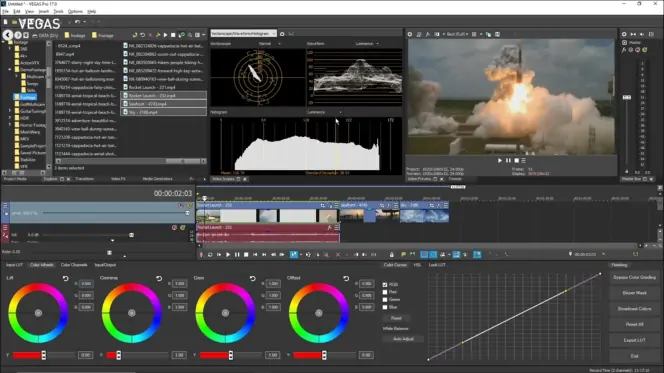
OS: Mac, iOS
Price: Free
Best for: Users of Apple devices
This is freeware for quality video editing, and it is available on every new Mac (OS X). Hence, as it comes for free, you don't have to pay for it. iMovie is compatible and can be used with a lot of iOS devices like iPod touch, iPad Mini, and iPhone too. This free video volume booster lets you perform many functions like importing photos and videos to your MacBook using the FireWire interface or through USB, and with it, video clips up to 4k can be edited; you can add effects or any music of your choice too. As one of the best, iMovie comes with top features like a movie trailer, audio editing, and many others. In general, the iMovie interface is quite easy-to-understand. It is organized clearly, and only several buttons help you to create your movie. You can share the results with your friends right from the program. Among other features, iMovie provides several ways to increase the volume of video and audio clips. You can increase the volume of any audio or video clip in the project and any event video clip, as well as adjust the volume of individual sections of the clip. This feature gives you precise control over your audio: you can put sound accents anywhere in the project.
Pros:
- Ideal for Apple users on devices like Macs and iPhones
- Free to use across all Apple devices
- Precise control over audio volume
Cons:
- Not suitable for users on Windows or other platforms
- Interface takes a little time to get used to
- Not the most beginner-friendly option
Step 1. Open the Audio Adjustments window
To open the Audio Adjustments window, click on a clip, and then click the Audio Adjustments button. If one clip is too loud compared to the other clips, you can simply increase the volume of the clip.
Step 2. Adjust the volume level
To adjust the volume of a clip, click on a clip to select it. In the Audio Adjustments window, drag the volume slider to the level you want. Finally, click Done. The audio settings icon appears at the beginning of the clip. You can choose this icon to open the audio settings window and then change or delete the audio settings you have set. You can restore the original volume of the clip by clicking Revert to Original.
Step 3. Normalize the audio volume (optional)
Normalizing the volume of a clip If the subject is talking too loudly in one clip and too loud in another quietly, volume normalization will allow you to set the volume of your clips according to the volume level you prefer. To normalize the volume of clips, click a clip to select it with the Audio Adjustments window open. Click Normalize Volume. This setting sets the maximum volume of clips without distortion. Select another clip and then click Normalize Volume again. The volume of the two clips is adjusted to the same level.
How to increase a video volume online
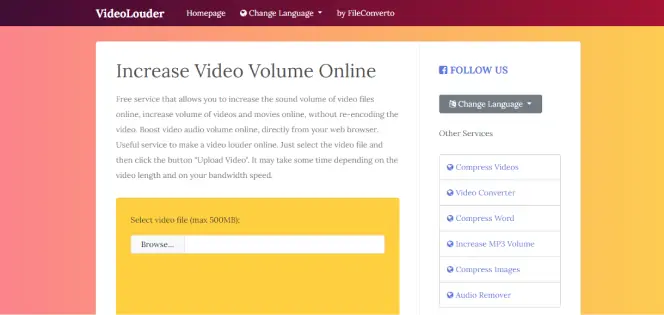
OS: Any
Price: Free
Best for: Users who want to increase video volume online
Sometimes the volume of the playback device is not sufficient to play a quiet video. To fix that, you would need to find a special app. Unfortunately, there are practically no Internet resources that allow you to add volume to the sound, since they are quite difficult to implement. But don't worry – there is a way to increase the video volume online, and that's the VideoLouder website.
Pros:
- Easy-to-use video volume booster online
- Works on any platform or device
- No downloads or installs needed
Cons:
- Can be slow to process depending on internet speed
- Requires internet connection to use
- Max file size 500MB
Step 1. Go to VideoLouder website
Open the main page of the site by following the link below. Scroll down the tab and click on the Browse button to start downloading the files. It should be borne in mind that the weight of the record should not exceed 500 MB.
Go to the VideoLouder website
The browser will start, then you should select the necessary object and click Open.
Step 2. Adjust the volume in your video
From the Select an Action pop-up list, select Increase volume. Set the required option in Decibels. The desired value for each video is selected individually, especially if there are several sound sources in it. The best option to increase the volume of dialogues is 20 dB, for music – 10 dB, and if there are many sources, it is better to choose an average value of 40 dB.
Step 3. Get your video clip
Left-click on Upload File. Wait until the processing is complete and click on the link that appears to download the processed video to your computer.
Now you can start viewing by launching the downloaded object through any convenient player. As you can see, it took only a few minutes to use the VideoLouder MP3 video booster to increase the volume of the video to the desired value.
Using a video volume increaser on an iPhone

OS: iOS
Price: Free
Best for: Users of iOS devices
If you use an iPhone, try Movavi Clips. This multifunctional video editor for iOS can make your video sound louder in just a few taps. There are also multiple video effects that you can use to add some excitement to your movie. Here are some guidelines for changing sound levels.
Pros:
- Easy to use
- Completely free for iOS users
- Also offers cropping, trimming, and merging
Cons:
- Some in-app purchases needed to get full functionality
- Watermark when using free version
- Some users report bugs
Step 1. Upload your video
Run the video volume increaser and upload your video file by clicking the Plus button at the bottom. Choose Video, define the aspect ratio, and select the video you want to be louder. Touch Start editing.
Step 2. Make the video sound louder
Tap the Audio icon on the toolbar. Move the Video volume slider to the right to increase the volume. Touch Play to listen to your video with the new sound level. Adjust the sound until you like it, then tap the Check mark icon.
Step 3. Save the resulting footage
Tap the Save icon. You'll see a new window with previews of your video. Touch Save one more time and wait for a few moments. Your video is ready to rock!
Now you know how to make a video louder on an iPhone. Here's a guide for Android phones.
Using a video volume editor on an Android device
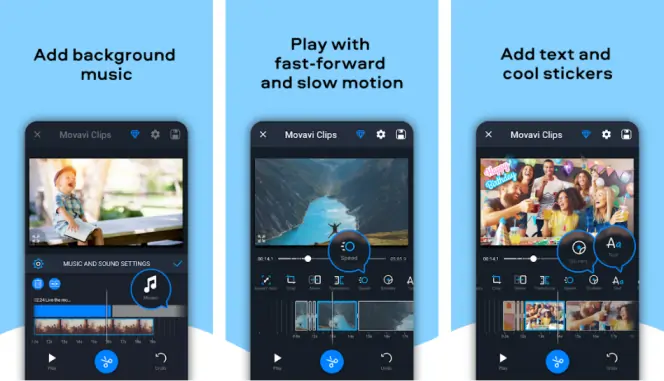
OS: Android
Price: Free
Best for: Users of Android devices
To adjust the video volume on Android phones, you may also need an appropriate mobile video volume editor. Get Movavi Clips and take control of your video: not just the volume, but many other parameters, too. The easy steps below will help you to improve the sound in your video.
Pros:
- Free to use
- PC-like editing on your phone
- Additional editing tools like cutting and merging
Cons:
- Requires in-app purchases to access certain features
- Watermark when using free version
- Performance varies depending on your device
Step 1. Add your video file
Tap the Movavi Clips icon. After the program has loaded, add your file by tapping the Plus button. Touch the Video icon, select the video you want to alter, find the Start editing button at the bottom, and tap it. Specify your preferred aspect ratio.
Step 2. Increase the Video Volume
The sound settings can be changed in the Audio tab. There, tap the Cogwheel icon and define the new video volume by moving the Video volume slider to the right. The Play button will help you to choose the volume needed. If you like the result, tap the Check mark button.
Step 3. Save the Result
Touch the Floppy disk icon at the top right. On the next screen, tap Save. Your video will be ready in no time! That's how you make audio louder on Android.
Useful tips on video sound
Nowadays, many people have YouTube channels where they post videos on thousands of different topics. The threshold for entering the world of vlogging is much lower: you just pick up your mobile phone and start filming. Most video bloggers started their careers this way.
The audience is growing following interesting content, and the quality of sound and video in video blogs has not affected the number of views for a long time. But it is easy to lose a viewer if, in order to understand the speech in your video, he has to make an effort: it is easy to find a lot of videos on any topic on the Internet that is interesting to watch.
The sound on the TV, in theaters, and on YouTube is very different. This is due to the setting and format: TVs almost never have a built-in subwoofer and it is rash to expect uniform low frequencies from it. In the cinema hall, hardly anyone will play, clean, or cook food in parallel with the viewing.
YouTube videos are mainly watched from the screens of mobile phones, and as you can imagine, the speaker systems are different everywhere. One thing is important for a video blog: the presenter's voice should be legible and heard even on mobile phones.
When recording sound at home or outdoors, pay attention to ambient noises. It is enough to close the window and door to the next room and turn off the computer at home. Outdoors – choose a location away from highways or noisy places. If you have to record a video in a noisy place, try to place the microphone closer to the presenter. Record the sound break – silence, space. Background sounds will surely get into it, but it will be easier to fill in voids by sound with this phonogram during editing.
Preparing for the recording
The number one problem with sound recording is the reflection of sounds from objects around you, concrete walls, parquet floors, windows, and others. The echo is created that spoils the final recording.
Instead of centering the room, move to the wall that has a blanket or carpet. If the house has a dressing room, then there is no better place to record. Clothes will absorb sound, which means that nothing superfluous will come out on the recording.
The best recordings are created in the quietest environment possible. Make sure that there is no or minimal noise around you before you start recording. Turn off all the objects that produce noise – even the quietest ones.
To get the most intense musical experience, you need to position your monitors correctly. Imagine a perfect triangle with your head and each speaker at the top. Using a tape measure, lanyard, or even an audio cable, measure the distance between the two monitors and then make sure the distance from each monitor to your position is the same. In the future, try to sit at this point when listening and recording.
The distance between the speaker and the capsule of a condenser microphone is important and can greatly affect the tonality of a recorded voice. The closer you get, the more the microphone emphasizes low frequencies and creates an effect called the "proximity effect". To avoid the effect of proximity, the speaker should be positioned about 15 centimeters from the microphone, and the group of podcasters may be seated even further to create a "discussion in the room" effect. We advise you to experiment to find the perfect sounding distance.
Technical equipment
When using a bi-directional and omnidirectional microphone, take care to use reflectors that minimize the volume from behind or from the sides. If you use a unidirectional microphone (which captures sound only from the front), then it is better to place the reflector behind the speaker - this way, you will remove all unnecessary sounds that may appear behind your back.
If you don't have the budget for professional solutions, using a thick bedspread or blanket on the wall or closet behind the speaker can create the perfect recording environment. The main thing is to close as large an area as possible.
Headphones and monitors have their pros and cons, so it's best to know when to use what. Monitors are ideal for listening and mixing - they will allow you to understand the sound of your recording on most audio devices. But while recording, it is better to use headphones – in this case, the sound from the microphone will not be duplicated when leaving the monitor.
Using closed headphones such as Mix-Fi during recording will help control-click tracks and virtual channels so that they do not fall into the microphone - and even with the coolest soundproofing that allows you to focus on the recording. Open-back headphones are ideal for sound evaluation and mixing tests - these headphones allow air to flow freely to the speakers and make it richer.
Sound processing
After recording, the sound must be synchronized with the image. It is better to do this in the editing program for each shot taken. It is not known which of the frames may be useful to you. After adding takes, start cleaning the soundtrack. It is recommended that you do this after synchronizing the sound with the image. Consider the style and genre of your video. It is better to keep the genre peculiarities and not try to fit into the video everything that you have learned in video and sound.
For further references in sound processing, visit the following pages:
How to make a voice-over video
How to remove background noise

Movavi Video Editor Plus
Make videos. Create. Inspire.
* The free version of Movavi Video Editor Plus has the following restrictions: 7-day trial period, watermark on the output videos, and, if you're saving a project as an audio file, an ability to save only half the audio length. Learn more
Frequently asked questions
How can I increase the volume of a video file?
There are several ways to boost the video volume. If you use Windows Movie Maker, you can adjust the sound in your clip for free. First, add your video to the app. To adjust the volume, you can right-click the video on the timeline and choose Video Volume in the drop-down menu. A small window will open where you can move the volume slider to the right, if you want to make the sound louder.
Another way to make your video louder is to use Movavi Video Editor Plus. It's also easy: just add your files to the app, click the cogwheel icon to find the video properties. In the Video tab, find the Volume section and then adjust the settings according to your taste.
How do I increase the volume of an MP4 video?
You can adjust the volume of your MP4 clip with Movavi Video Editor Plus. To do this, just add your file to the app, find the cogwheel icon and click it to open the Clip Properties tab. There, find Volume and drag the corresponding slider until you're satisfied with the result.
How do I increase the volume of a recording?
You can do this online and offline. If you prefer now to download the additional apps, VideoLouder may help. To adjust the volume of your clip, add your recording to the online service by clicking the Browse button. As it's done, select Increase volume and put the needed volume level in decibels. When everything is finished, click Upload File to get the resulting footage.
If you prefer a desktop app, you may try Movavi Video Editor Plus. Increasing the volume in this program is really easy. To do this, add your recording to the program, then find the Clip Properties icon. In the window that appears, find the Volume section and adjust the volume level using the slider.
How to Make Your Microphone Louder Than Windows Lets You
Source: https://www.movavi.com/support/how-to/how-to-make-video-louder.html